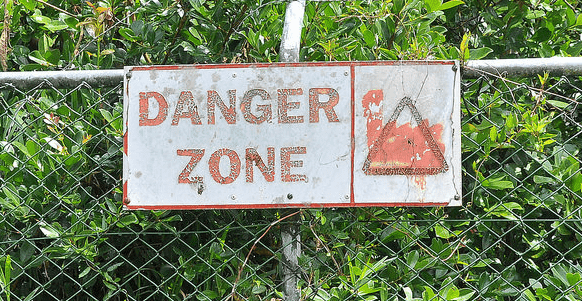Check out this week’s Danger Zone interview with Chuck Jaffe of Money Life.
We believe that Morningstar’s size and stronghold on the rating industry do not always serve investors’ best interests as much as perceived. “The Morningstar Mirage,” a recent article from the Wall Street Journal, shows many of the dangers of Morningstar’s dominance but many more remain. We’ve covered many of the pitfalls of Morningstar’s impact on the industry, as seen below.
- Technical research on funds is not enough to fulfill fiduciary duties.
Backward looking fund ratings can only tell you where a fund has been, not where it’s going. The WSJ report found that Morningstar’s Star Rating system is not a good guide to a fund’s future performance. In fact, of the funds with a five-star rating, only 14% had performed at a five-star level over the three years measured by WSJ.
Morningstar’s own research in 2010 came to a similar conclusion regarding the predictive success of their ratings. In the report, Morningstar found that in 58% of the funds measured, the expense ratio, not the star-rating, had a higher success rate in predicting performance.
- Morningstar’s research is conflicted.
Morningstar derives a significant amount of its revenue (73% of revenue from its “license-based” segment in 3Q17) from asset managers, both from selling data and collecting licensing fees to advertise Morningstar ratings. Not surprisingly, just like Wall Street’ stock ratings, Morningstar’s fund ratings are skewed toward more positive ratings. A study in 2014 found that only 3% of funds receive a Morningstar “Negative” analyst rating. Assigning negative ratings means fewer funds want to pay to advertise the rating. In addition, poor ratings can damage Morningstar’s relationship with that fund manager. The bottom line is that it appears Morningstar has material incentives to provide positive ratings regardless of how well those ratings serve investors.
- Morningstar’s research creates conflicts with best interests of investors.
Managers spend large sums of money and dedicate senior personnel to keep their fund ratings high. In 2014, Financial Times reported that PIMCO founder Bill Gross spent months lobbying Morningstar analysts to avoid a downgrade on PIMCO’s flagship fund. Additionally, fund managers hire executives specifically to manage relations with Morningstar. These executive salaries can translate into higher fees for investors.
Managers also pursue suboptimal performance strategies in order to cater to the Morningstar rating system. David Blanchett found in his 2011 paper, “Gaming the system: the impact of Morningstar category changes on peer rankings”, that underperforming managers will “drift” into different categories where their relative ranking looks better. These “drifting” funds saw significant inflows after the switch, but went on to underperform their new peers.
- Morningstar ratings are NOT a substitute for diligence.
As noted in the WSJ report, Morningstar ratings are used as a safety net. “It’s a cover-your-ass type of service,” says Samuel Lee, a former strategist at Morningstar. “An adviser can say, ‘I’m going to put you in this fund, it’s a 5-star fund,’ …and if something goes wrong the adviser can shunt blame to Morningstar.” At the same time, Morningstar ratings can lure advisors into making decisions, not because they’re right, but because they’ll receive the least backlash. One former adviser quoted in the WSJ piece noted “Advisers get in trouble when they go against the grain. You isolate yourself more if you sell something else rather than just go with what research recommends.”
- Morningstar ratings affect fund inflows/outflows.
Morningstar doesn’t only affect fund manager decisions, but also investors’ decisions. As reported in the paper “Star Power: The Effect of Morningstar Ratings on Mutual Fund Flow“ as well as WSJ’s recent article, investors pour money into top rated funds, even if their performance declines. On the flip side, investors pull money from low rated funds, even if their performance improves. The WSJ found more than a dozen cases where well-performing funds attracted few investors until they received a five-star rating.
- The Buffalo Emerging Opportunities Fund (BUFOX) saw its assets under management quadruple in the five months after it received a five-star rating. Two years later the fund’s rating fell to two-star’s and its assets plunged to less than $100 million (from a high of $400 million).
- The Hodges Small Cap Fund (HDPSX) had less than $100 million in assets prior to receiving a five-star rating in 2011. The fund manager paid Morningstar more than $10,000 to advertise its five-star rating, and by the end of 2014, the fund had reached $1.6 billion in assets. The fund currently earns a one-star rating and has just over $700 million in assets.
Investors Must Perform Their Own Due Diligence
Despite the shortcomings, Morningstar ratings provide an excellent starting point when making an investment decision. Investors should consult several sources of research, along with their own due diligence, before making a decision on a fund. Simply buying based on the star-rating is not performing diligence or fulfilling the fiduciary duty to clients.
This article originally published on November 13, 2017.
Disclosure: David Trainer and Kyle Guske II and receive no compensation to write about any specific stock, style, or theme.
Follow us on Twitter, Facebook, LinkedIn, and StockTwits for real-time alerts on all our research.
Click here to download a PDF of this report.
Photo Credit: parue85 (Flickr)
